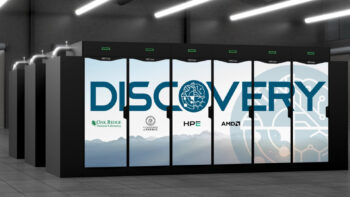Choosing a public cloud provider is no longer a technical puzzle for IT departments. For SMEs in Poland, it has become one of the fundamental business decisions that defines a company’s ability to innovate, scale and compete successfully in an increasingly digital market. The cloud frees SMEs from the cost and complexity of managing their own infrastructure, allowing them to focus on growth, while opening up access to technologies that until recently were reserved exclusively for the largest corporations.
Three titans have emerged in the global arena, which together control around 65% of the market: Amazon Web Services (AWS), Microsoft Azure and Google Cloud. Each offers a powerful arsenal of tools, but their philosophies, strengths and cost models differ significantly. Let’s analyse which of these giants is the best strategic partner for Polish SMEs in 2025.
3 players, 3 strategies
Understanding the market position of each provider is key to assessing the maturity of their ecosystems. As a pioneer, Amazon Web Services has consistently held a leadership position with a market share of 30-32%. Its strength is its vast experience, the broadest portfolio of over 200 services and the largest global community. For many businesses, AWS is synonymous with the cloud – a proven and secure choice.
Just behind it is Microsoft Azure, controlling 20-22% of the market. The power of Azure lies in its deep, native integration with the entire Microsoft ecosystem. For companies whose operations have relied on Windows Server, Office 365 or Active Directory for years, Azure is the natural and often easiest step into the cloud.
Google Cloud (GCP) closes the stakes with a share of 11-13%, but it is the fastest-growing player. Its impressive momentum is testament to its strength in areas that are defining the future of technology: artificial intelligence, advanced data analytics and containerisation. GCP is the choice for companies focused on innovation and building modern, cloud-native applications.
The art of cost optimisation
The myth of a single, objectively ‘cheapest’ cloud is one of the biggest misunderstandings. There is only the most cost-effective cloud for a particular business model. All providers offer a flexible payment model for actual usage (pay-as-you-go) and significant discounts for long-term commitments. However, the real differences lie in the unique savings mechanisms.
Microsoft Azure has an ace up its sleeve in the form of the Azure Hybrid Benefit. This programme allows companies that already have licences for Microsoft software, such as Windows Server, to move them to the cloud, paying only for the infrastructure itself. For many organisations, this can mean a drastic reduction in costs and makes Azure unbeatably affordable.
Google Cloud, on the other hand, focuses on simplicity and automation. Its Sustained Use Discounts mechanism automatically calculates discounts for the continuous use of virtual machines in a given month. The longer the resources run, the greater the discount appears on the invoice, without the need for any prior bookings. This is ideal for SMEs that do not have dedicated teams to manage their finances in the cloud.
AWS offers the most advanced and granular optimisation tools, such as Savings Plans, but taking full advantage of them requires knowledge and active management. It’s a powerful option, but one that requires more commitment.
Infrastructure foundations and innovation
Core services such as computing power, databases and storage are the foundation of any application. AWS EC2 offers the widest selection of virtual machines on the market, allowing you to precisely match resources to any need. Azure Virtual Machines are the natural choice for Windows-based environments, while Google Compute Engine stands out for its high network performance and unique ability to create machines with custom configurations, allowing you to optimise costs perfectly.
However, the real battle for the future is in the field of artificial intelligence. Google Cloud is widely recognised as an innovation leader here, offering the most advanced and developer-friendly tools on the Vertex AI platform. Microsoft Azure focuses on providing deployment-ready AI services for business, such as Azure OpenAI. AWS, on the other hand, has the broadest yet complex portfolio of AI services, with the powerful SageMaker platform at the forefront.
Security, scalability and a Polish accent
All three giants provide the highest global level of security, RODO compliance and advanced auto-scaling mechanisms that allow applications to dynamically adapt to load. However, from the perspective of the Polish market, one player has a unique and strategic advantage.
Microsoft Azure is the only one of the ‘Big Three’ to launch a fully functional region with data centres located in Poland, near Warsaw. For Polish SMEs, especially in regulated sectors such as finance or healthcare, this is a factor of great importance. Storing data within the country radically simplifies compliance with the requirements of RODO and the recommendations of national regulators, such as the FSA. Furthermore, the geographical proximity of the data centre guarantees minimal latency, which for industries such as e-commerce or gaming translates into a real improvement in user experience and can be a direct competitive advantage.
A tailor-made choice
The final decision does not come down to finding the objectively best platform, but the one that best fits the company’s profile.
An enterprise deeply embedded in the Microsoft ecosystem, for which ease of integration, licensing benefits and data sovereignty guaranteed by the Polish region are key, will naturally gravitate towards Azure.
In turn, a technology startup or a company whose competitive advantage is based on advanced data analytics and artificial intelligence will find in Google Cloud the most innovative tools and a friendly environment for building cutting-edge applications.
By contrast, an organisation that needs access to the broadest possible spectrum of services, values the maturity of the platform and is willing to invest in learning to gain full control of the infrastructure is likely to choose the market leader, AWS.
Regardless of the choice of platform, local implementation partners play a key role. Companies such as Tameshi (AWS), IT.integro (Azure) or the Government Cloud Provider (GCP) help with the migration, optimisation and management process, providing invaluable support on the journey to the cloud. The best strategy is to start with small pilot projects, taking advantage of generous free programmes to see in practice which technology best meets the needs and ambitions of the business.












